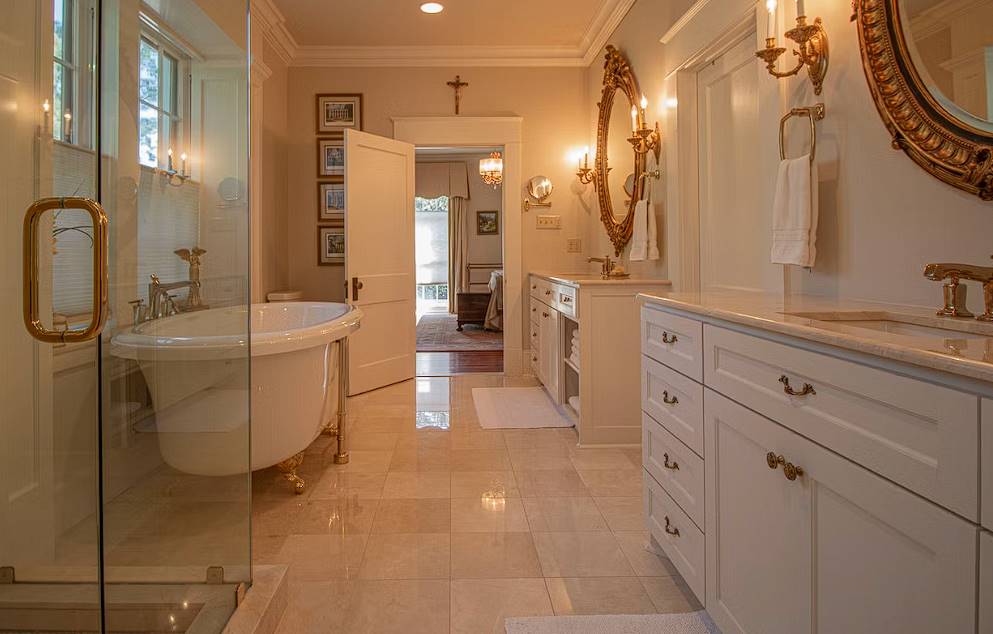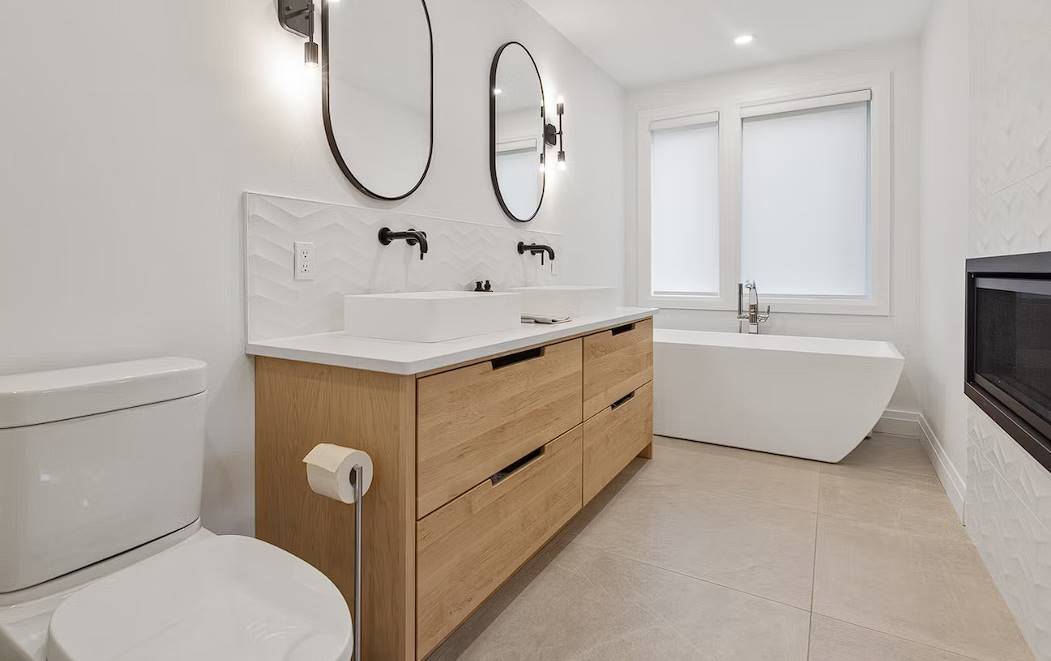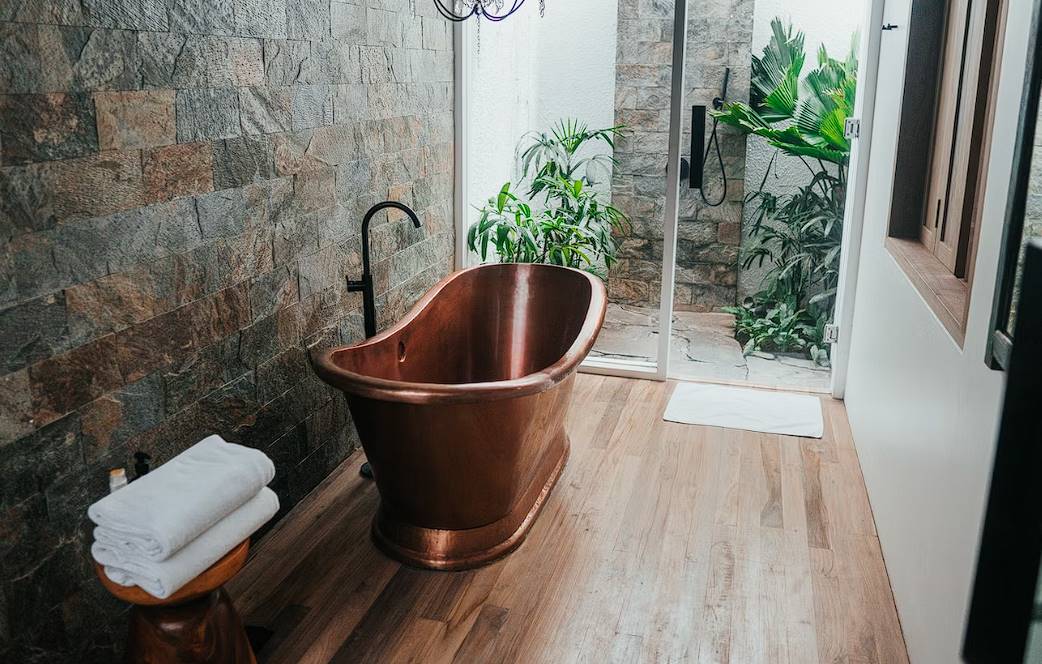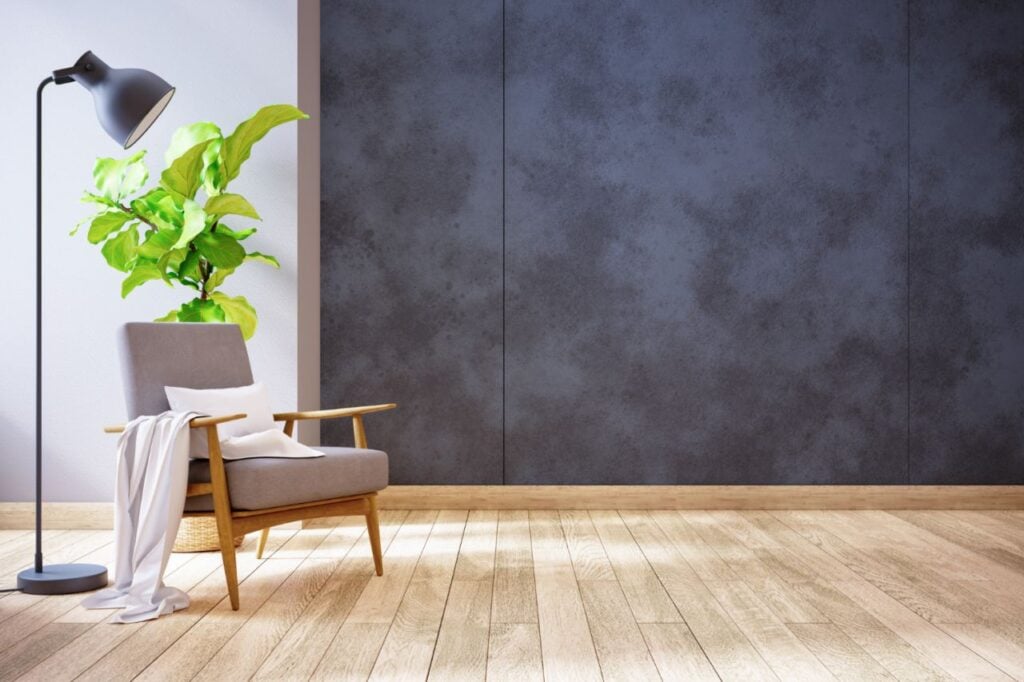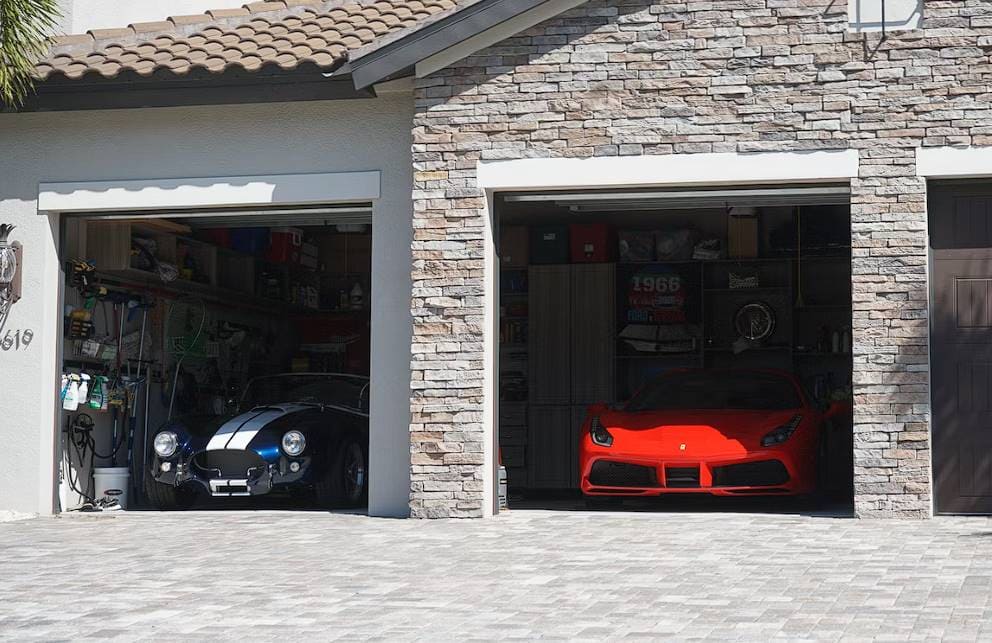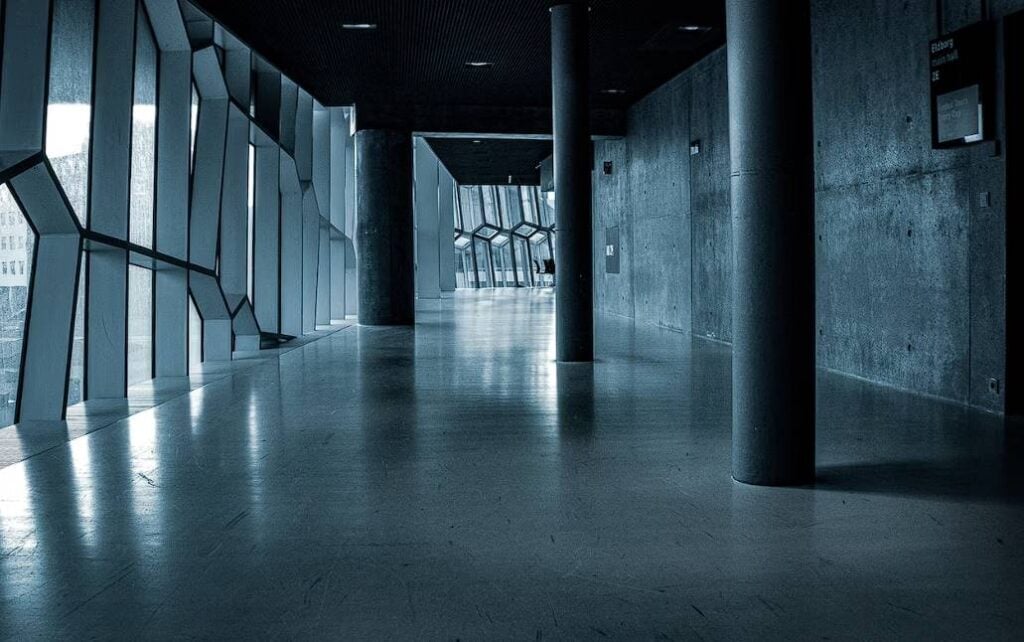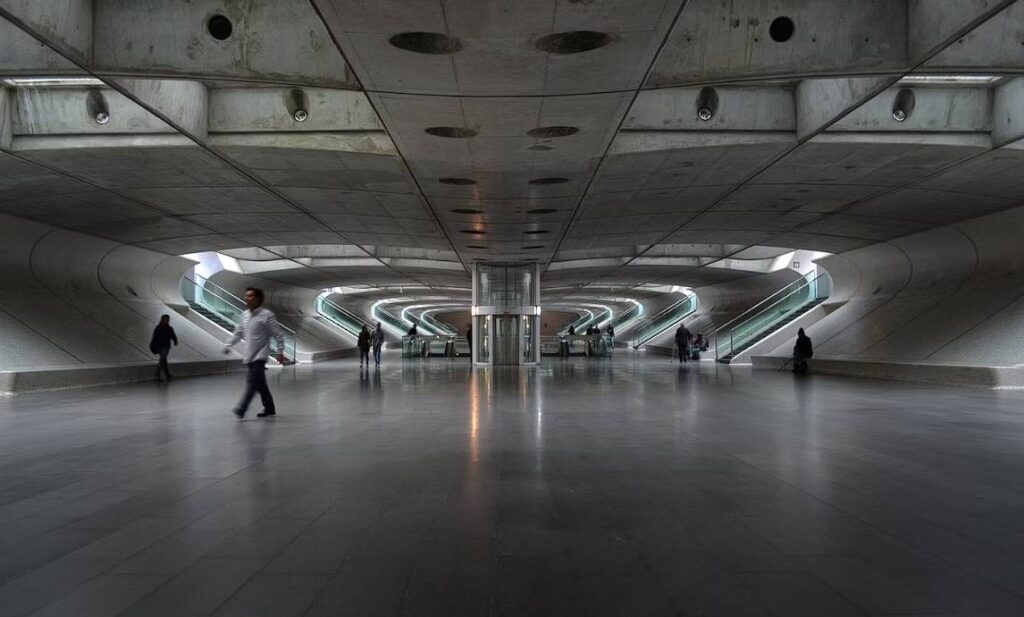The bathroom is, contrary to popular belief, one of the most crucial rooms in the house. It's a must-have for anyone planning to stay in their house for an extended period of time or thinking about putting it on the market in the future. As a result, it's not surprising that bathroom renovations receive even more attention during the remodelling process than they did during the home purchase process.
Regarding finishes, particularly flooring, bathrooms require special considerations, primarily due to the presence of water. Water, in all its forms, can cause significant damage to the home, and bathroom flooring tends to bear the brunt of any water-related mishaps.
Factors such as durability, maintenance, and safety requirements must be carefully considered. The good news is that plenty of options are available that combine stylish design with resilient functionality.
Who will be utilising the restroom should be a top priority. For instance, a guest suite that is rarely used could benefit from a more luxury floor treatment than a master bathroom that is used daily by children.
This blog will show you some of the most popular bathroom flooring options to help you find the perfect one for your home, no matter your budget.
Best Flooring for Bathrooms
In most areas of the home, the primary focus when selecting flooring is its appearance. You want the floors in your living room, dining room, bedroom, or office to look fantastic, and performance is a secondary consideration. However, when it comes to bathrooms, the rules change.
When choosing flooring for your bathroom, it's crucial to consider how well it will perform under specific conditions. And in the case of bathrooms, the main concern is water—lots of it. Water is a constant presence in bathrooms and is expected rather than an occasional occurrence. It can be found on the walls, ceiling, and especially the floor.
Moisture can quickly damage flooring that is not suitable for bathroom environments. To complicate matters further, you must also take into account other factors. While moisture resistance alone would make sheet vinyl or ceramic tile the top choice, you must consider additional factors such as durability, appearance, cost, and ease of installation. These factors should all be part of the decision-making process when choosing the right flooring for your bathroom.
Ceramic or Porcelain Tile
When considering bathroom flooring options, tile emerges as the preferred choice among many individuals. Ceramic and porcelain tiles, in particular, offer a multitude of benefits for bathroom spaces. These tiles exhibit resilience, water-resistant properties, a vast array of colors and designs, and are often more cost-effective compared to alternative hard surface materials. Porcelain tiles, with their minimal water absorption compared to other ceramic products, prove to be especially suitable for areas exposed to water, such as shower tiles.
Despite the numerous advantages, some buyers perceive certain drawbacks when it comes to tile flooring. Its hard surface is often associated with terms like "hard," "cold," or even "sterile." Although it is true that prolonged standing on tile can be uncomfortable, this is a characteristic shared by most hard surfaces. However, addressing the issue of floor temperature can be achieved by incorporating radiant flooring systems, which work effectively in conjunction with porcelain and ceramic tiles. Moreover, the non-absorbent nature of tile surfaces promotes easy cleaning, water resistance, and resistance to germs, making it an excellent choice for maintaining a hygienic and sterile environment.
One potential concern regarding tile flooring, including porcelain and ceramic options, is its tendency to become slippery when exposed to moisture—a common occurrence in bathroom settings. However, it is important to note that this slipperiness is not unique to tile alone but can be observed in various hard surface materials. To mitigate this issue, selecting tiles with textured surfaces, particularly for shower areas, becomes crucial in enhancing safety and minimising the risk of slips and falls..
Vinyl or Linoleum Bathroom Flooring
Vinyl flooring is an excellent budget-friendly option for bathroom flooring. It offers several advantages, such as easy cleaning, waterproof properties, and staining resistance. In addition, opting for high-quality sheet vinyl or linoleum rather than peel-and-stick tiles minimises seams and prevents water from seeping through.
One advantage of vinyl flooring is that it typically comes with a felt or foam backing, providing a softer feel than wood or tile. This cushioning effect can benefit bathrooms, where wet floors can increase the risk of slip-and-fall accidents. However, while experienced DIY enthusiasts can handle the installation of vinyl bathroom flooring, it is advisable to seek professional assistance for larger bathrooms that require the piecing together seams.
Natural Stone
Natural stone flooring is a great choice for bathrooms, but it is important to consider the cost involved. Materials such as marble, granite, and limestone are excellent options that generally do not pose moisture problems in the bathroom. Natural stone is known for its hardness, durability, and appealing aesthetics. Additionally, it has a positive impact on the resale value of a property.
However, there are a couple of factors to be mindful of when choosing natural stone for a bathroom floor. Firstly, it can feel cold underfoot. This issue can be addressed by installing radiant heating beneath the stone flooring, providing a comfortable temperature. Secondly, natural stone flooring can be slippery when wet. To mitigate this risk, you can opt for textured stone through sandblasting or choose naturally textured stones like slate, which offer better traction.
The primary drawback of natural stone flooring is its high cost. It is the most expensive flooring option, making it a luxury choice that may only suit some budgets.
Stained Concrete
When it comes to bathroom flooring, an alternative option for those with a concrete foundation or subfloor is to consider staining and finishing the concrete floors. However, it is crucial to understand that concrete is only naturally waterproof if it undergoes proper finishing and sealing procedures. This typically entails acid etching to prepare the concrete for staining, as well as extensive filling, patching, and grinding. Given the complexity involved, it is generally advised to seek professional assistance rather than attempting it as a do-it-yourself project.
Stained concrete flooring offers an affordable and visually appealing choice, presenting a range of unique colour finishes specific to each concrete surface. This ensures that your floor will possess a distinct look that sets it apart from others. Nevertheless, it's important to acknowledge that stained concrete can become slippery when wet, much like tile floors. To address this potential issue, non-slip additives can be incorporated. It's worth noting that some prospective homebuyers may perceive concrete floors as cold or associate them with a certain level of risk. Therefore, if you are remodelling with the intention to sell, these factors should be taken into consideration.
Cement Encaustic Tile
Because of their handmade nature, there will be slight differences in colour, line, and size between individual tiles. Because of this unique quality, they stick out and are all the more endearing.
In addition, you can find a diverse range of patterned and plain designs to choose from, allowing for customisation and personalisation. Moreover, handmade tiles often exhibit a rich and deep colour palette, providing a sense of depth to the overall aesthetic.
However, it is important to note that handmade tiles require sealing to protect them against staining. Additionally, ongoing maintenance is necessary to ensure their longevity and preserve their appearance. Properly sealing and maintaining the tiles can safeguard them against potential stains and keep them looking their best. This commitment to upkeep is crucial in order to fully enjoy the unique beauty and characteristics of handmade tiles.
Cork Flooring for Bathrooms
Cork flooring is an excellent choice for bathrooms due to its eco-friendliness and various beneficial properties. Cork is a highly renewable resource made from bark, making it an environmentally friendly option. In addition, it is naturally resistant to mould, mildew, and water damage, making it well-suited for bathroom environments. To provide additional protection against minor spills, a polyurethane topcoat can be applied to the cork floors. It is important to note that cork should be resealed every few years to maintain its resistance to moisture.
For above-grade applications in bathrooms, glue-down cork tiles are a suitable option. These tiles are available in both finished and unfinished varieties. However, for below-grade bathrooms, it is recommended to use click-in-place cork planks to prevent water from seeping between the gaps. In addition, choosing unfinished cork and finishing the floor on-site can help enhance water resistance and prevent moisture-related issues.
It is worth mentioning that installing cork bathroom floors can be challenging, and it is best to seek professional assistance for proper installation. Their expertise ensures that the flooring is correctly installed, allowing you to enjoy the benefits of cork in your bathroom while avoiding any installation issues.
Engineered Wood
Regarding high moisture conditions, engineered wood is superior to solid wood flooring due to its enhanced dimensional stability. Engineered wood consists of a plywood base that exhibits good resistance against moisture. Furthermore, the top layer of engineered wood is made of real hardwood veneer, which gives it an authentic wood appearance. Therefore, if you desire the natural beauty of wood flooring in your bathroom, engineered wood is recommended.
It's important to note that even with the advantages of engineered wood, any type of wood product is susceptible to damage in bathroom environments. Despite being well protected and designed for moisture resistance, prolonged exposure to water and high humidity can still lead to potential issues. Therefore, it is crucial to take appropriate precautions, such as promptly wiping up any spills and maintaining proper ventilation, to minimise the risk of damage to the flooring.
Bamboo Bathroom Flooring
Bamboo flooring is an environmentally friendly option made from a highly sustainable resource. It offers the added benefit of being budget-friendly, often costing significantly less than hardwood floors, with some options priced at as little as half the cost.
For bathroom flooring, engineered bamboo is the recommended choice. Engineered bamboo flooring has a durable plywood base, making it well-suited for wet environments like bathrooms. It provides enhanced resistance to moisture and is designed to withstand the challenges of such spaces. Additionally, engineered bamboo flooring is known for its ease of installation, and if any planks do become damaged, they can be replaced easily.
It's important to note that inexpensive bamboo flooring may be more susceptible to scratching. Therefore, treating it with care, similar to hardwood floors, is advisable. Using protector pads when moving furniture can help prevent scratches and preserve the flooring's appearance over time. By taking proper precautions, bamboo flooring can be a cost-effective and eco-friendly option that adds natural beauty to your bathroom.
How Do I Choose a Slip-Resistant Bathroom Floor?
Talking to your flooring provider for advice on the slip-resistance of a potential material is essential for finding the most effective non-slip bathroom flooring. Based on their knowledge, they can give helpful advice and suggestions.
When compared to bigger format tiles, the greater number of grout lines that come with smaller tiles actually improves their slide resistance. Some tile manufacturers and retailers indicate slip resistance using R ratings, notably the Ramp test (R9–R13). The higher the R rating, the less likely it is that you will slip.
If you want to save money on heating and cooling costs, select big format porcelain tiles with a R10 value or above. This contributes to the flooring's improved slide resistance, which in turn increases bathroom safety.
For those who are still worried, there have been improvements in long-lasting anti-slip therapies in recent years. Tiles can usually be treated in this way after installation without negatively impacting their aesthetic. Instead, they add a layer of slip resistance that gives you peace of mind without sacrificing the floor's aesthetic value.
The bathroom flooring should be non-slip according to the owner's needs and preferences. However, by consulting the provider and taking slip-resistant ratings into account, you may make your bathroom more secure for your use without sacrificing design.
Flooring to Avoid in the Bathroom
Solid Hardwood
Solid hardwood flooring lacks sufficient protection against moisture, as it is vulnerable to rot when exposed to even small amounts of moisture. Despite this drawback, solid hardwood flooring is visually appealing and offers a warm sensation underfoot, similar to carpet.
If you are determined to have solid hardwood flooring in your bathroom, ensuring flawless installation without any gaps allowing moisture to seep in is crucial. Achieving this level of precision typically requires the expertise of professional installers. Additionally, opting for site-finishing of the hardwood flooring tends to be more effective than installing pre-finished flooring. Site finishing involves applying a protective coating that fills the seams between the boards, impeding moisture penetration from the top surface.
By meticulously installing solid hardwood flooring with no room for moisture infiltration and utilising site-finishing techniques, you can minimise the risks of moisture exposure. However, it is important to note that solid hardwood could be better for bathroom environments than other flooring options due to its susceptibility to moisture damage.
Wall-to-Wall Carpeting
Carpeting is not recommended for bathrooms because it retains moisture for extended periods. In addition, the confined spaces of bathrooms hinder the drying process, making carpet an unsuitable flooring option. However, if you still prefer carpet in the bathroom, there are certain considerations to remember.
It is essential to select a low-pile carpet with a minimal thickness. This helps reduce the moisture absorbed and trapped within the carpet fibres. In addition, opting for carpets made from 100-per cent inorganic materials, such as olefin or nylon, is crucial. Inorganic materials are less prone to water damage and are more resistant to mould and mildew growth.
While these measures can help mitigate some of the issues associated with carpets in bathrooms, it's important to note that carpeting is generally not well-suited for wet environments like bathrooms. Alternatives like tile, vinyl, or other moisture-resistant flooring options are typically more suitable for maintaining a clean, functional bathroom space.
Have Fun With It!
The size of your bathroom plays a significant role in choosing the right flooring. While size may not be everything, a small bathroom presents an excellent opportunity to be creative and make the most of your flooring choices while staying within budget. You can explore patterned tiles in a small bathroom, creating an illusion of a larger space. Since less material is required for a smaller bathroom, consider investing in more expensive tiles without exceeding your budget. Don't hesitate to be bold and venture into unique and unconventional flooring options that align with your preferences.
Fortunately, finding the perfect bathroom flooring is no longer a tedious task, as there is now a wide range of options available compared to previous years. This abundance of choices allows you to select flooring materials that cater to your style, budget, and specific requirements. So embrace the opportunity to explore and create a bathroom space that reflects your individuality and personal taste.
Conclusion
Anyone who intends to live in their home for a lengthy amount of time or who is thinking about putting it up for sale should prioritise updating the bathroom. Water poses unique challenges, but luckily there are many solutions that successfully merge eye-catching design with long-lasting durability. If you're looking for a new bathroom floor, this blog will show you some of the most popular types so you can make an informed decision. It's crucial to think about moisture resistance, durability, aesthetics, price, and ease of installation when picking bathroom flooring. The advantages of ceramic and porcelain tiles include durability, water resistance, and low cost.
When it comes to tiling a bathroom or kitchen that gets a lot of moisture, porcelain tiles are your best bet. Because of its hard surface, non-absorbent nature, ease of cleaning, water resistance, and resistance to germs, tile flooring is a great choice for bathroom flooring. However, it can become slippery when wet, therefore, it's important to choose tiles with textured surfaces if you live in a wet climate. Bathroom flooring made of vinyl or linoleum costs less than tile since it requires less maintenance and is easier to clean. The felt or foam backing makes it more comfortable to stand on than hard surfaces like wood or tile.
Bathroom vinyl flooring is a good option, but for larger bathrooms, it's best to hire a professional. Natural stone flooring is well-known for its toughness, longevity, and aesthetically pleasing appearance, yet, it can be uncomfortable to walk on when damp. With the right finishing and sealing techniques, stained concrete might be a waterproof solution for individuals with a concrete subfloor or foundation. Stained concrete flooring is inexpensive and aesthetically pleasing, but it can be dangerous when wet. Handmade encaustic cement tiles include a vibrant colour pallet and a wide range of hues.
Because of its eco-friendliness and other advantageous features, cork flooring is a great option for bathrooms. To keep it watertight, you'll need to reseal it every few years. We recommend click-in-place cork planks for below-grade bathrooms and glue-down cork tiles for above-grade bathrooms. Using unfinished cork and finishing the floor, in-situ can increase the material's resistance to water and assist in avoiding moisture-related problems. Important information includes the fact that cork bathroom floors can be difficult to install and that, due to its greater dimensional stability, engineered wood flooring is preferable to solid wood flooring.
Bamboo flooring in the bathroom is a cost-effective and eco-friendly alternative because bamboo is a rapidly renewable resource. The sturdy plywood subfloor of engineered bamboo flooring makes it ideal for humid areas like bathrooms.
In recent years have been advancements in long-term anti-slip therapy. Hardwood floors are attractive to the eye and comfortable to the feet. Due to its vulnerability to moisture damage, wall-to-wall carpeting is not a good choice for bathrooms. The carpet you choose should have a low pile and be somewhat thin. Choose carpets made entirely of inorganic materials like olefin or nylon to cut down on humidity and stop the spread of mould and mildew.
When working with a limited budget, a small bathroom presents a unique opportunity to be creative with flooring. Now more than ever, you may choose the flooring materials that best suit your needs, preferences, and budget.
Content Summary
- Bathroom renovations receive significant attention during the remodelling process.
- Bathroom flooring requires special consideration due to water presence.
- Many options combine stylish design with resilient functionality.
- Consider the needs of the individuals using the bathroom when selecting flooring.
- Ceramic and porcelain tiles offer resilience, water resistance, and various designs.
- Tile surfaces can be cold and hard, but radiant flooring systems can address this.
- Vinyl flooring is budget-friendly, easy to clean, and waterproof.
- Natural stone flooring is durable and enhances property value.
- Handmade cement encaustic tiles offer unique designs and customisation.
- Cork flooring is eco-friendly and resistant to moisture and mould.
- Engineered wood provides dimensional stability and a natural wood appearance.
- Bamboo flooring is cost-effective, eco-friendly, and durable.
- Consulting with flooring providers can help you choose slip-resistant options.
- Grout lines in smaller tiles improve slip resistance.
- Big format porcelain tiles with an R10 value or above enhance slide resistance.
- Anti-slip treatments can be applied to tiles without compromising aesthetics.
- Solid hardwood flooring is visually appealing but vulnerable to moisture damage.
- Proper installation and site finishing can minimise moisture exposure with solid hardwood.
- Wall-to-wall carpeting is not recommended for bathrooms due to moisture retention.
- Low-pile carpets made from inorganic materials are better for bathroom use.
- Small bathrooms provide opportunities for creative flooring choices.
- Patterned tiles can create the illusion of a larger space in small bathrooms.
- There is a wide range of flooring options available for bathrooms.
- Choose flooring materials that reflect your style, budget, and specific requirements.
- Consider maintenance, durability, appearance, and cost when selecting bathroom flooring.
- Stained concrete offers unique colour finishes but can be slippery when wet.
- Cement encaustic tiles require sealing and ongoing maintenance.
- Cork flooring requires resealing every few years for moisture resistance.
- Engineered wood is recommended for bathrooms due to enhanced stability.
- Bamboo flooring is cost-effective, sustainable, and adds natural beauty.
Frequently Asked Questions
Luxury Vinyl Plank Flooring
Even so, for the money, vinyl plank is one of the best bathroom choices (keep an eye out for leaks). It's durable, even in the most traffic-heavy homes, looks great right out of the box and requires very little special treatment to stay in good shape.
Ceramic tiles are an easy favourite in bathrooms, especially on the floors. They're water-resistant, easy to clean, and incredibly versatile, coming in essentially every shape or colour.
A good quality laminate floor is well equipped to handle levels of high UV, which means that it should not fade easily in the sun. In addition, laminate flooring has an aluminium oxide coating as a top layer, which will prevent fading and determine how the floor will wear over time.
The most popular colours for bathroom flooring are white, beige, eggshell, light grey and sand. However, depending on your overall look and chosen accessories, any of these colours should be a perfect match.
As a general rule of thumb, a bathroom floor should be a darker shade than the accompanying walls and ceiling. However, if your preference dictates, you can choose to be adventurous and go against the grain.
